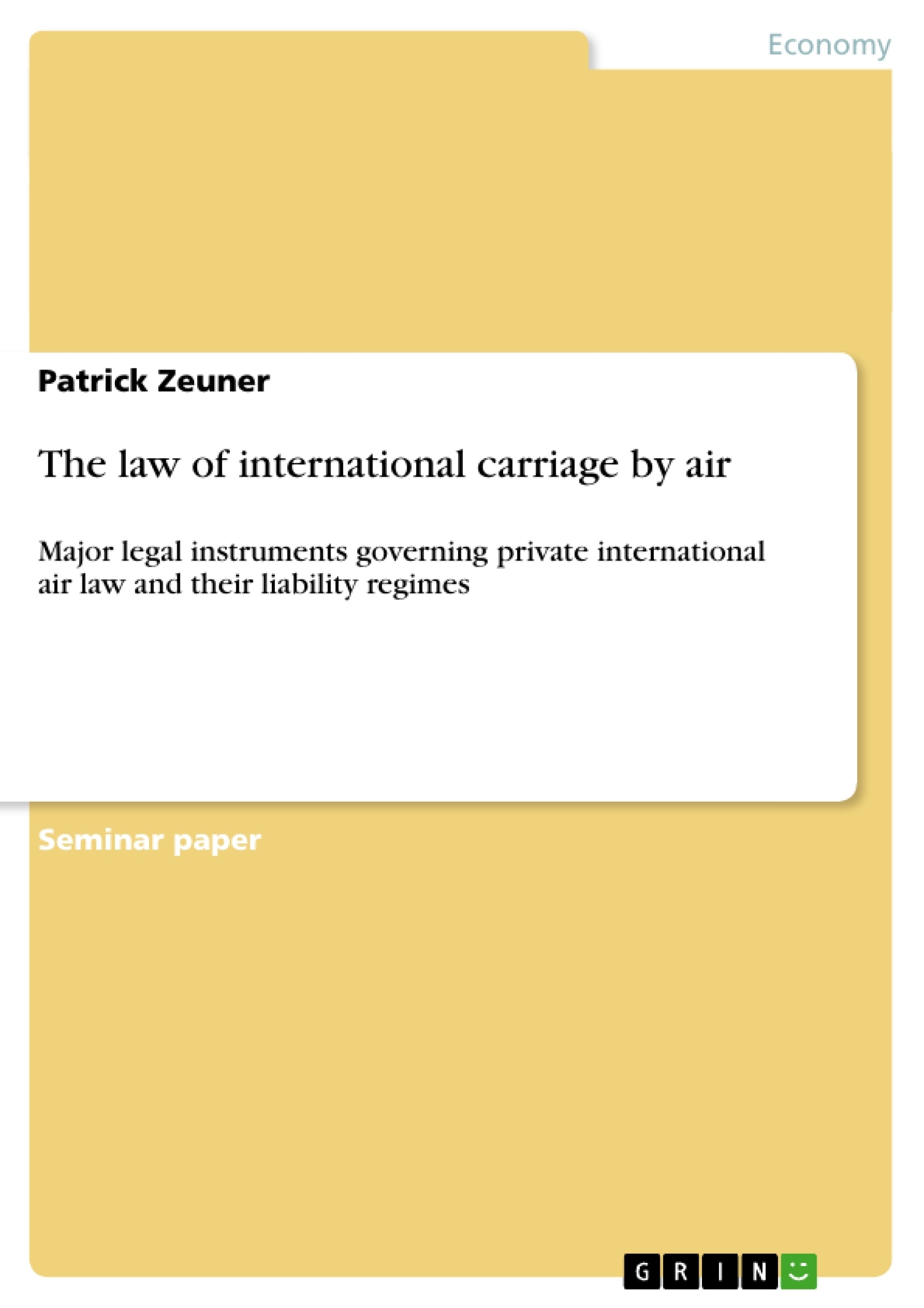Abstract:
The developments of more than hundred years of aviation history have lead to a framework of
laws on different aspects of the aviation industry.
For the people aboard the flying aircraft, different rules are applied as compared on land.
Within the field of aviation, the air is the major space touched. But because until the
20th century nobody was able to control an air vehicle, no conflicts erased for intra- or crossborder
air traffic. This circumstance changed quickly. Only 16 years after the remarkable
milestone of the first engine-powered flight by the Wright brothers from 1903, the growing
importance of air travel lead to the first international agreements for air transport. When in
1919 the first scheduled air service between Paris and London came into operation, the
necessity for air regulations was an incontrovertible fact. The first agreement was written
down in the Paris Convention, which was held in the same year and ratified from 32 nations.
The major result of the convention was the recognition of exclusive sovereignty for the states
over their airspace, which is still the applied principle today. The agreement also included the first
definition of the term aircraft and annexes for technical standards. Nowadays two distinct areas of air law can be differentiated. The international public air law is dealing with rights and obligations of nations in the field of civil aviation. The international private air law governs legal issues for private entities within international air transport, regulating mainly the relation between air carriers and private individuals and cargo shippers. This paper will focus on those aspects. It will give insights of the major milestones of private international air law like the Warsaw System created in 1929, analyze the necessities for the creation of the Montreal Convention of 1999 and give information on its content. Furthermore a special focus will be established on the liability regimes of the two conventions.
Inhaltsverzeichnis (Table of Contents)
- Introduction
- Major legal instruments of private air law
- Historic Developments: From Warsaw to Montreal
- The Warsaw System and its content
- The Montreal Convention of 1999...
- Analysis of the liability rules for Air Carriers comparing the Warsaw System with the
Montreal Convention of 1999.
- General understanding of liability of the air carrier.
- Liability scheme in case of personal injury or death.
- Liability scheme for baggage
- Liability scheme for cargo..
- Liability scheme for delay.
- Duration of liability and place of Jurisdiction…......
- Conclusion.......
Zielsetzung und Themenschwerpunkte (Objectives and Key Themes)
This paper aims to provide an in-depth analysis of the major legal instruments governing international private air law, with a particular focus on the Warsaw System and the Montreal Convention of 1999. The paper will explore the historical development of these instruments and analyze their respective liability regimes.
- The historical development of private international air law
- The Warsaw System and its evolution
- The Montreal Convention of 1999 and its key provisions
- A comparative analysis of the liability regimes of the Warsaw System and the Montreal Convention
- The impact of these conventions on the international air transport industry
Zusammenfassung der Kapitel (Chapter Summaries)
- Introduction: This chapter introduces the paper's topic and provides a brief overview of the historical development of air law, highlighting the importance of international agreements in regulating air transportation.
- Major legal instruments of private air law: This chapter delves into the historical development of private international air law, focusing on the key milestones that led to the creation of the Warsaw Convention and the Montreal Convention.
- Analysis of the liability rules for Air Carriers: This chapter compares the liability rules of the Warsaw System and the Montreal Convention for different scenarios, including personal injury or death, baggage, cargo, and delay.
Schlüsselwörter (Keywords)
Key terms and concepts discussed in this paper include international private air law, Warsaw System, Montreal Convention, liability regimes, air carriers, air transportation, international agreements, and the historical development of aviation.
- Arbeit zitieren
- Diplom Betriebswirt (BA) Patrick Zeuner (Autor:in), 2008, The law of international carriage by air, München, GRIN Verlag, https://www.grin.com/document/91443



